BALANCE ON THE PINNACLE
Sailing World
|Fall 2023
The path to gender equity in the Olympics has been a long and twisted one, but when the sailors assemble in Marseille next year, we'll finally see what's been a long time coming.

THE Paris 2024 Olympic Games will be the first time there will be gender equity in the sailing competition determined by an equal number of male and female athletes, along with the number of medals that can be won, a momentous achievement that took 50 years of effort by sailing's leadership and recognition by the International Olympic Committee. With the benefit of hindsight, one might wonder why gender equity in sailing wasn't automatic when the modern Games were reestablished in 1896. A good question for historians, but we are in a better place now.
The opportunities for women have grown substantially over the past few decades, and the performance of female sailors has improved as a direct result. The days when women had limited opportunities are behind us, which is quite amazing given the Adams Cup for the North American Women's Championship was once one of a few top-tier regattas in the United States specifically for women. It was extremely rare for a woman to compete in the Olympic Games, and I was around for the start of the discussion to include a separate class for women in the Olympics. The year was 1975. I was the 25-year-old coach of the American squad that raced in the newly created European Women's Championship in Mataró, Spain. The small seaport resort was about 40 miles northeast of Barcelona. The US entered two crews in both the singlehanded and doublehanded disciplines.
One evening late in the regatta, a forum was held to discuss the possibility of creating a Women's World Championship and adding a class dedicated for women in the Olympic Games. It sounded like a bold concept at the time. Surprisingly, several women spoke out against the idea. Their message was they didn't want a separate division; they wanted the opportunity to race against men. The conclusion at the end of the long session was to meet again one year later and propose the concept to the International Yacht Racing Union.
このストーリーは、Sailing World の Fall 2023 版からのものです。
Magzter GOLD を購読すると、厳選された何千ものプレミアム記事や、10,000 以上の雑誌や新聞にアクセスできます。
すでに購読者ですか? サインイン
Sailing World からのその他のストーリー
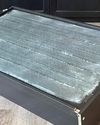
Sailing World
Tips for More Successful Epoxy Projects
That have nothing to do with epoxy mixing or application techniques
5 mins
Fall 2023

Sailing World
Auxiliary Rear Station Build
From past fishing experiences, I've learned that quick changes in speed and direction are often required when retrieving a hooked fish.
4 mins
Fall 2023
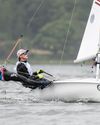
Sailing World
TARGETED PERFORMERS
Defending their title at the 420 Youth Worlds in July, Freddie Parkin and Asher Beck were on a roll-until they weren't.
6 mins
Fall 2023
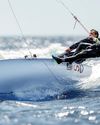
Sailing World
BALANCE ON THE PINNACLE
The path to gender equity in the Olympics has been a long and twisted one, but when the sailors assemble in Marseille next year, we'll finally see what's been a long time coming.
5 mins
Fall 2023
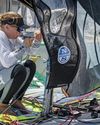
Sailing World
SIMPLE STEPS TO CONSISTENT SPEED
Boatspeed is the magic ingredient for winning races because we can get away with bad decisions if we are fast, but we can't make good choices if we're slow.
4 mins
Fall 2023
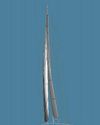
Sailing World
THREE-DIMENSIONAL JIB-LEAD ADJUSTMENTS
Floating jib leads give trimmers more dynamic control of the headsail profile.
5 mins
Fall 2023
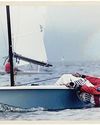
Sailing World
BETTER TOGETHER
Success over three decades comes down to making it meaningful.
3 mins
Fall 2023
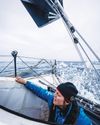
Sailing World
JUSTINE THE MACHINE
This self-effacing Swiss sailor has-in her quiet and understated way become one of the stars of offshore ocean racing in recent years, whether as part of a winning crew in The Ocean Race or building her credentials as a top-class solo racer.
6 mins
Fall 2023
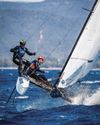
Sailing World
THE MULTITASKING MULTIHULL MOM
Competing in Olympic sailing's most challenging discipline is one thing, but doing so with a tyke in tow takes the campaign hustle to a higher level.
5 mins
Fall 2023
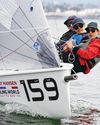
Sailing World
CONNECTED COAST TO COAST
From sunny St. Pete to historic Marblehead, the 34th edition of the Regatta Series linked sailors and friends across the country, with a few new twists.
3 mins
Fall 2023
Translate
Change font size

